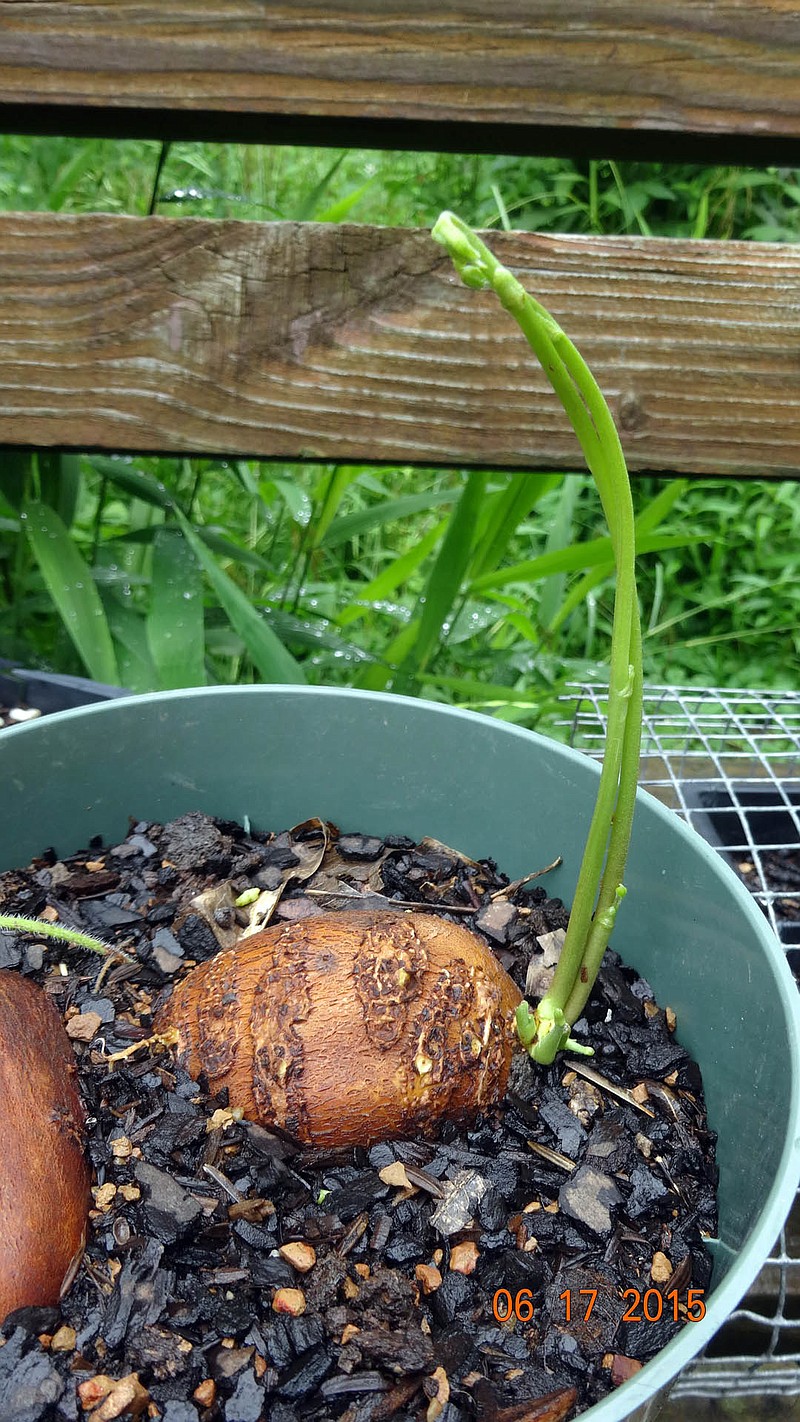One of our more obscure native edibles, the groundnut (also known as hopniss, wild potato, Indian potato, Dakota peas and sea vines) was eaten long before the coming of Christopher Columbus and has been studied for its potential for domestication as a crop.
Daniel Moerma, in his “Native American Food Plants,” mentions 14 Native American groups that consumed groundnut. Most of them gathered it from the wild, but there is evidence a few of them, including the Cheyenne, planted it near their settlements.
There are several reports groundnut was first introduced in Europe in the 1600s, but was soon forgotten and then reintroduced in the 1800s in hopes of replacing the diseased Peruvian potatoes (known as Irish potatoes). Based on many accounts, groundnut could potentially be consumed in greater amounts than regular potatoes with more research to select faster growing plants with larger tubers, one has to wait two years after planting to harvest wild groundouts 2 inches or larger.
There was research conducted at Louisiana State University by Dr. W.J. Blackmon, B.D. Reynolds and colleagues to develop better performing varieties for more than 10 years in the 1980-90s, resulting in larger groundnuts and dwarf vines, making them more desirable as crop plants. Some cultivars developed from this program could still be available from small seed companies.
Groundnut is a perennial herbaceous plant that climbs over other vegetation in natural stands forming dense thickets, but can be trained as a vine on an arbor or trellis in gardens. The edible parts of the plant are the tubers and seeds. The tubers are connected by slender rhizomes, forming a necklace-like appearance, and they look and taste like regular potatoes. They can be harvested any time of the year but are at their best in late fall through winter. They can be consumed raw or cooked but taste better cooked. The seeds taste and look like beans or peas, and in Missouri are harvested in the fall and cooked like peas. The attractive salmon-pink flowers appear in late summer.
It is important to mention consuming groundnut tubers may cause a severe allergic reaction in some people. Interestingly, there have been cases when people become allergic to this food the second time they consumed it but there is no scientific evidence to confirm the cause of this change. For this reason, it is recommended it to always eat it cooked. (I have eaten it several times without any problems.) Regarding the foliage, although deer browse on the leaves and preliminary studies conducted in West Virginia suggest goats may benefit with the consumption of the foliage, it should not be consumed by humans.
Because of the prolific growth of the vines and the tubers, I grew groundnuts in raised beds 6-by-3 feet and 2 feet tall in pots 2 feet in diameter and 10 inches tall for three years to make observations on growth and production. During the first year, tubers grew about an inch in diameter. Two years after planting, they reached the size of a goose egg.
Because groundnuts naturally grow near streams or lakes, they should be planted in moist soil with good drainage. They adapt well under full sun to moderate shade. Groundnut is in the legume family and like many members of this family is a nitrogen fixer, forming nodules as a result of a beneficial association or symbiosis with rhizobial bacteria, similar to regular beans and soybeans. This helps groundnut to grow well in poor soils.
When grown in raised beds, rhizomes can find their way out of the bed, so if aggressiveness is a concern it is recommended to cover the bottom of raised beds with a water permeable material like weed barrier. Several layers of cardboard can provide good results too. Groundnuts developed really well and produced nice looking tubers in both pots and beds, but it was much easier to harvest in pots. Every year now, I harvest the larger tubers for consumption and replant the little ones for my next crop.
Groundnut (Apios americana) can be confused with other edible legumes, such as non-native peanuts (Arachis hypogaea — also called groundnuts in some places), native wild turnip (Pediomelum esculentum) and hog peanut (Amphicarpea bracteata). The Flora of Missouri is a great source to learn to tell these legumes apart.
Groundnuts can be used in any recipe calling for potatoes. I have prepared them as mashed potatoes, but they can be a little drier than normal mashed potatoes. To fix that, add ¼ heavy cream and/or ¼ of a cup of chicken or vegetable broth to a cup of mash potatoes. Kelly Kindscher in “Edible Wild Plants of the Prairie” and Reynolds et al. in their report “Domestication of Apios americana” groundnuts are a good source of carbohydrates and the tubers and seed contain large amounts of protein.
I love growing potatoes and sweet potatoes and any other kind of tuber, but since we don’t have much sun in our front or backyard, I settled for groundnuts as a good substitute. There is nothing more therapeutic and special for me than getting my hands in the soil to dig these priceless foods. I recommend it! They can feed you and give you the satisfaction of gardening them yourself.
Dr. Nadia Navarrete-Tindall is a native plant educator and independent consultant. She offers educational workshops about native edible plants and other topics on native plants, as well as consultation on native plants for yards and acreages. She lives in Columbia with her husband Randy and their dog Bonita. She can be reached by email at [email protected] or on her Facebook page “Native Plants and More” (previously “Native Plants Program”).

